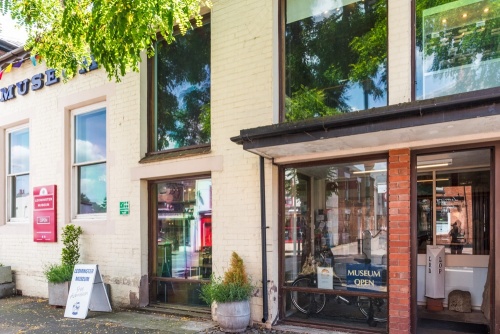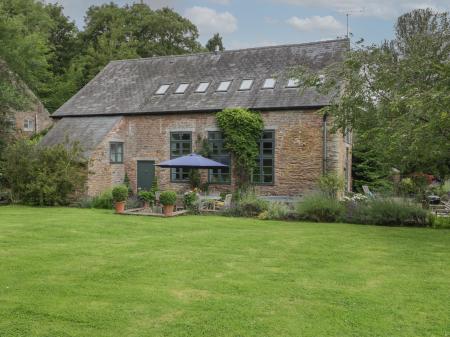
The museum (originally called the Leominster Folk Museum) has a wealth of historical artefacts and archives for Leominster and the surrounding area. See a Bronze Age burial unearthed at Aymestrey, locally crafted agricultural smocks, and a collection of unique early postage stamps and marks for use locally. Opposite the entrance is a 15th-century iron-bound oak chest.
One interesting exhibit showcases cheques and banknotes printed for the Leominster and Herefordshire Bank and railway artefacts from the construction of the Leominster and Kingston Railway.

The museum opened its doors on Etnam Street in 1972, in a building once used as a mission house for railway workers. It later purchased a 19th-century stable owned by the neighbouring building. The building was extended to display an entire cider mill which was left to the museum.
Outside the mill is a collection of farm tools and agricultural items including a fearsome 'man trap', a bone-crushing iron trap used to cripple poachers.
The newest addition to the museum is a special display called 'Rifles and Spades', a collection of local objects connected to World War One.

Among objects associated with John Scarlett Davis is a sketchbook holding 173 sketches, and a self-portrait painted in 1828.
The 100-year-old Chelsea Bun
One very unusual exhibit displays 'The Leominster Chelsea Bun'. The story behind the bun goes back to 1916 when a local man named Hodges was fighting in the trenches of France during WWI. His sister wanted to send him a morale-boosting reminder of home, so she bought a Chelsea bun from Pewtres' bakery on Broad Street and sent it to her brother.
Before the bun could reach him, the brother was injured in combat and sent home to recuperate. The bun followed him through the military postal service and eventually arrived back in England where Hodges was in hospital. The bun was put by, and eventually forgotten until it was too stale to eat.
The 100-year-old bun, now desiccated, sits in its brown cardboard container in a display case on the ground floor. As for Hodges, he made a recovery from his wounds and became a cobbler after the war, with a shop in Burgess Street.

Getting There
The Leominster Museum is well signposted for pedestrians and is very easy to reach from central Leominster. From Corn Square take School Lane to Etnam Street and you will see the museum immediately opposite on the far side of the street.








 We've 'tagged' this attraction information to help you find related historic attractions and learn more about major time periods mentioned.
We've 'tagged' this attraction information to help you find related historic attractions and learn more about major time periods mentioned.




